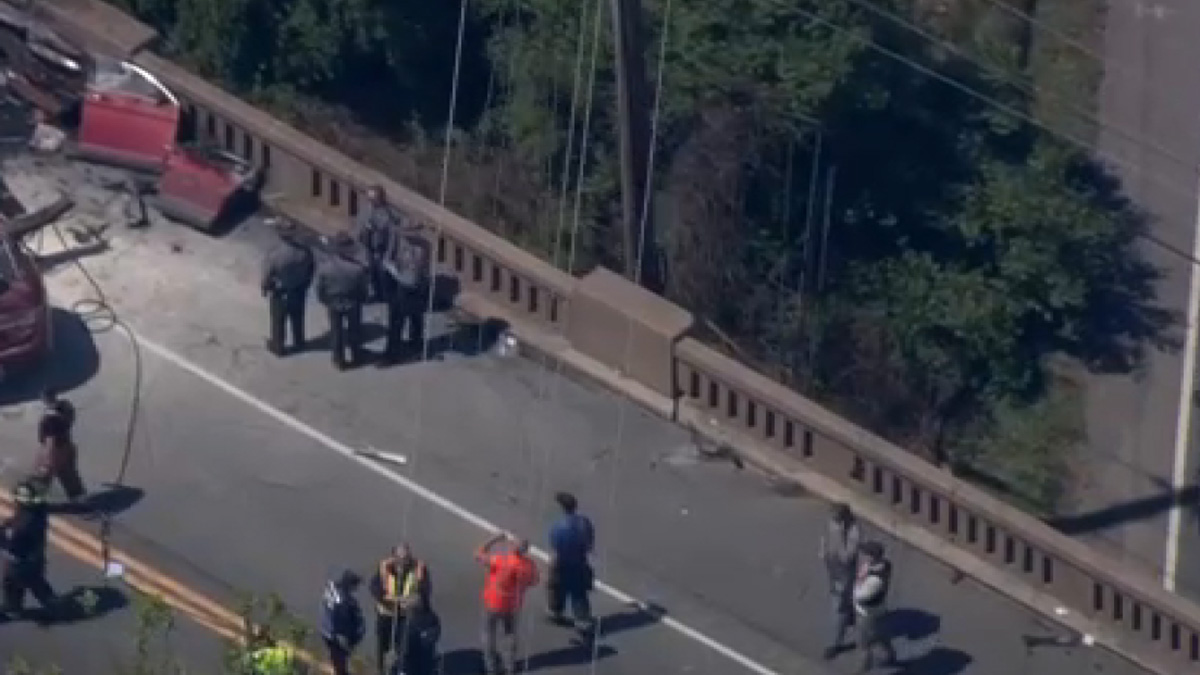An NBC10 blog post was the spark for the news coverage plan of one of the largest storm events on the Atlantic coast.
NBC10’s chief meteorologist Glenn “Hurricane” Schwartz first blogged about Superstorm Sandy a week before its treacherous landfall. Sandy hit the Atlantic coast the evening of Oct. 29, 2012 near Atlantic City.
"Sandy was quite a forecast challenge, especially five to seven days ahead of time. The most reliable computer model in the world, the European, was showing a hurricane tracking very close to the coast," said Schwartz.
"It would be a big storm, regardless of whether it was technically a hurricane, or some sort of hybrid storm, combining a hurricane with a nor’easter. Other computer models, including the specific hurricane models, were forecasting Sandy to move well out to sea."
There was a buzz in the newsroom about the reach and potential harm to the Philadelphia region since Schwartz’s first warning. Preparations were immediately put in place as to how the television station would cover the storm. News Director Anzio Williams had covered Hurricane Katrina as a former news director at WDSU-TV, and drew upon that experience.
Plans were put in place to cover the epic storm.
When asked during a conference call, "What is the worse-case scenario?" Schwartz replied, this could be "the worst natural disaster in the history of this area.”
Local
Breaking news and the stories that matter to your neighborhood.
Schwartz recalled the phone fell silent for a few moments as he discussed his forecast with NBC station managers nationwide.
Reporting teams were dispatched to locations throughout the region. The entire newsroom began rotating, continuous 12 hour shifts. Neighboring hotel rooms were booked, cots were set up inside the station's offices and conference rooms.
"During Sandy, I was on the boardwalk in Rehoboth, starting my shift at 2 a.m. I was damp for two days straight," said Delaware Bureau Chief Tim Furlong.
"When I got to a hotel to sleep, I will never forget the sound outside the sliding glass door. Every set of waves felt like a 747 landing on the boardwalk."
Jersey Shore reporter Ted Greenberg remembers being positioned on the Ventnor boardwalk at high tide with photographer John Marcucci and having to leave early due to the water approaching.
"Of course, there was a lot of adrenaline when the storm first started moving in," said Greenberg.
Reporter Rosemary Connors was stationed in Long Beach Island where there was no running water nor electricity.
The damage was unbelievable. People's beach block homes were ripped apart. Furniture was floating in the street. The sand was piled so high that it was unclear if anyone would be able to get on or off the island for a few days.
"Despite our limited resources and lack of sleep, we knew we had important information to deliver, as we were in constant contact with emergency crews still on the island," Connors said.
Sandy was the second-costliest Atlantic hurricane in history, behind Hurricane Katrina in 2005. The storm ranks as the largest Atlantic storm on record. Its winds stretched 900 miles in comparison to Katrina’s, which were 300 miles wide, according to FEMA.
"I honestly didn’t think it was going to be that big of a deal. We had prepared for blizzards in the same way and they just never came with all that much force," said assignment editor Adrienne Marofsky.
Reporter Vince Lattanzio sums up covering Sandy as "surreal." One of his tasks was to continuously collect viewer photos and videos via social media and then show them on-air. Every new photo he received, he thought, looked “worse and worse.”
One of the most stark images he recalled seeing was a picture from Brigantine -- that's near where Sandy made landfall -- of a house on its side in the middle of a street.
Sandy’s surge was more destructive over the length of the coastline, whereas Hurricane Katrina generated a high localized surge, displacing thousands of people, according to the Hurricane Sandy FEMA After-Action Report.
Marofsky and other staffers made hundreds of calls and sent hundreds of emails to get updates. Technology was vital to her tasking. Emergency management offices were trying to get information out on damage, roads closed, shelters set up, and where people could go for help.
"We are their connection to the rest of the world and what we say and do needs to be in the best interest of the people we serve," said Lattanzio.
Because many storm victims had no television or radio, getting the information out via social media become critical. Citizens and journalists were trying to figure things out on the go.
"This was the first hurricane where I really noticed the importance of technology. We used an internet powered backup to go live where no truck could take us," said Furlong. "I gained a deeper appreciation for Twitter. I had a continually updating magical stream of information -- not dopey 140 character snipes and gripes mind you."
The HS/NOAA Tropical Cyclone Report Hurricane Sandy summarized the death toll at 72 direct deaths and 87 indirect deaths.
"Besides covering the shore region daily, I also live there, so covering Sandy has been a personal experience. Although the flood waters stopped rising just before they reached my family’s home, my relatives as well as many friends and neighbors were not as fortunate," said Greenberg.
"Covering a year’s worth of stories in the storm’s aftermath, it’s still hard to see that many people are still struggling."
Reporters have the same concerns as the public. Where might station employees put their families during the storm, and will their own homes make it through okay?
Furlong recalls 9/11 coverage and wondering how long it was all going to last and when would we find "normal" again.
"I sent my wife and kids to my parents' house. They were safe and never lost power. Knowing they were ok helped me focus on my mission," said Furlong. “Many folks are still waiting. I ache for them."
The most valuable lesson Furlong learned from covering Sandy?
"Prepare, prepare, prepare."
Contact Sarah Glover at 610-668-5580, sarah.glover@nbcuni.com or follow @skyphoto on Twitter.



